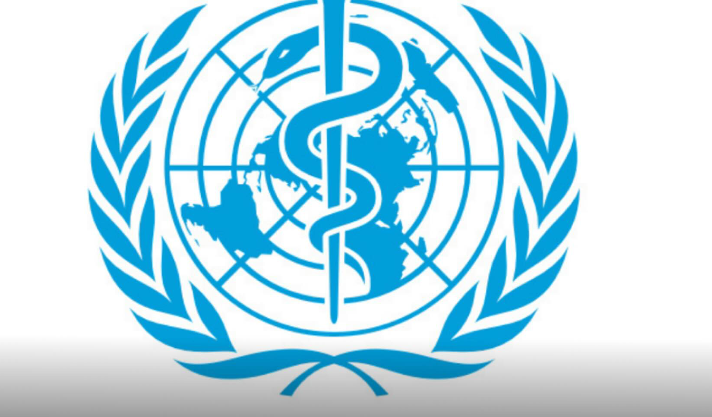

The World Health Organization has issued a stark warning that the world may be heading toward a dangerous public health crisis as drug-resistant gonorrhoea continues to rise sharply across multiple regions. Fresh data from the WHO’s Enhanced Gonococcal Antimicrobial Surveillance Programme (EGASP) paints a troubling picture of one of the world’s most common sexually transmitted infections evolving into a superbug that could become increasingly difficult — and in some cases impossible — to treat. Launched in 2015, EGASP was created to track how the gonorrhoea bacterium responds to antibiotics, generate evidence to update treatment guidelines, and help countries act quickly to prevent widespread outbreaks. Nearly a decade later, the newest findings suggest the infection is becoming more resilient than ever.
Between 2022 and 2024, drug resistance rose at an alarming rate. The study revealed that resistance to ceftriaxone — the last remaining routinely recommended first-line antibiotic in many countries — jumped from 0.8% to 5%. While the rise may look small on paper, health experts warn that any increase in ceftriaxone resistance poses a severe threat because once gonorrhoea develops full resistance to this drug, the world will have almost no reliable treatment options left. Meanwhile, resistance to cefixime surged from 1.7% to 11%, signalling that older antibiotics are rapidly losing their usefulness. Ciprofloxacin resistance soared to a staggering 95%, making it nearly obsolete for treatment in most countries. Azithromycin resistance remained steady at 4%, but WHO warns that even this level is concerning, given the global reliance on combination therapy in many regions.
Cambodia and Viet Nam reported the highest levels of resistance, raising fears that Southeast Asia may be at the centre of a growing antimicrobial storm that could spread internationally through travel, migration, and global interconnectedness. In 2024 alone, 12 countries — Brazil, Cambodia, India, Indonesia, Malawi, the Philippines, Qatar, South Africa, Sweden, Thailand, Uganda, and Viet Nam — reported a total of 3,615 confirmed cases through EGASP. Experts believe the true number is far higher, as many infections go undetected or unreported, especially among women, where symptoms can be mild or mistaken for other conditions.
More than half of symptomatic male cases, 52%, were reported in the Western Pacific Region, which has consistently shown higher rates of antibiotic resistance. The data also reveal that the typical patient is young; the median age was just 27 years old, highlighting how the infection continues to affect sexually active populations in their most productive years. Twenty percent of all reported cases occurred among men who have sex with men, a group that often faces heightened stigma and barriers to healthcare, further complicating prevention and reporting. Another 42% of patients reported having multiple recent sexual partners, 8% acknowledged using antibiotics recently — a known driver of resistance — and 19% had travelled, a factor that accelerates the cross-border spread of resistant strains.
While the rising resistance levels are deeply concerning, WHO says there have also been significant scientific advances that offer some hope. In 2024, the organization expanded genomic surveillance and sequenced nearly 3,000 samples from infected individuals. This approach allows scientists to track how the bacterium evolves, how quickly resistance emerges, and how strains spread across continents. It also provides critical insights that can shape new and more effective public health interventions.
In addition, clinical studies on two promising new antibiotics — zoliflodacin and gepotidacin — have progressed. Early research suggests these drugs may be effective against strains that no longer respond to traditional treatments. However, experts caution that without stronger global antimicrobial stewardship, even new medicines may eventually face resistance, repeating a cycle that has plagued gonorrhoea treatment for decades.
The EGASP programme itself is expanding as well. In 2025, Brazil, Côte d’Ivoire, Qatar, and India joined the network, marking an important step toward building a more comprehensive global surveillance system. But despite this progress, WHO acknowledges that several critical challenges remain. Funding gaps persist, with many countries lacking the resources to conduct routine testing and reporting. There are also significant limitations in data collection, particularly from women and from extragenital sites such as the throat and rectum, where infections can occur without symptoms but still contribute to transmission and resistance.
These gaps are especially worrying because gonorrhoea is notorious for its ability to mutate quickly. Underreporting and incomplete surveillance mean dangerous strains can circulate undetected for long periods, giving them time to spread widely before health authorities can respond. WHO warns that if the world does not act swiftly to strengthen surveillance, invest in new treatments, and improve sexual health education, resistant gonorrhoea may become a global crisis with life-threatening consequences, including infertility, ectopic pregnancies, and increased susceptibility to HIV.
Health experts emphasize that prevention remains the strongest line of defence. Consistent condom use, regular testing, prompt treatment, and open communication between sexual partners are critical tools in slowing the spread of infections. For governments, the message is clear: investment in sexual health services and antibiotic resistance monitoring is no longer optional — it is an urgent global priority. Without it, millions could face infections that modern medicine can no longer cure.
As the WHO continues to track the shifting landscape of drug-resistant gonorrhoea, the agency’s warning resounds more loudly than ever. A once easily treatable infection is evolving into a formidable superbug, and the world must act now to stop it before treatment options run out.


